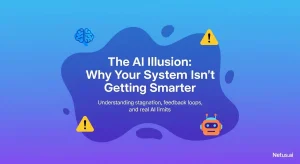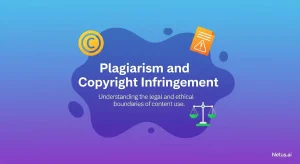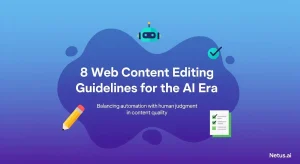How to Check Your Own Essay for Plagiarism: Expert Tips and
Tools
Ashley Merit
Content writer and editor for Netus.AI
Table of Contents
How to Check Your Own Essay for Plagiarism. The modern education system is shifting towards a research-oriented approach, aiming to provide students with a deeper understanding of the syllabus. As a result, academic institutions worldwide are increasingly encouraging students to produce their own research papers as part of their coursework. However, a common challenge faced during this process is the inadvertent inclusion of plagiarized content in their work.
To address this issue, it is essential for students to check their essays for plagiarism before submission. Free online plagiarism checker tools are available to help them ensure their work is original and free from any copied content. By doing so, students can confidently present their research papers without the risk of academic dishonesty.
Key Takeaways
- Research-oriented curriculum is becoming more prevalent in educational institutions
- Students must ensure their essays are plagiarism-free before submission
- Free online plagiarism checker tools can assist students in maintaining originality in their work
How to Write an Excellent Plagiarism-Free Paper?
Crafting a plagiarism-free academic paper relies on a few essential steps. First and foremost, selecting a topic is crucial for producing original content. If given the freedom to choose, students should pick a subject they are familiar with and have a strong understanding of, ensuring their unique perspective is showcased.
Next, developing original ideas for the topic is key, as this helps create a strong foundation for the paper. Students should brainstorm a frame of questions related to the topic to ensure engagement, analysis, and a well-structured layout. These questions should touch upon lesser-known concepts and the student’s individual approach to the topic.
To further achieve originality in their writing, students should follow these guidelines:
- Paraphrasing: Rewrite information from existing sources, ensuring it is expressed in a new way.
- Original work: Rely on their understanding and critical thinking skills to produce unique content.
- Academic writing: Maintain a formal tone and cite sources correctly to avoid plagiarizing and showcase credibility.
By adhering to these principles, students can create plagiarism-free papers that reflect their original thinking, and their academic writing can shine with clarity and confidence.
The Most Challenging Part in Research
A significant obstacle in the research process is the collection of pertinent materials and resources. Students can utilize the internet or their university’s databases to find relevant information for their academic papers and publications. Additionally, resources such as writing labs can provide valuable guidance. These online extensions of university writing centers offer a variety of resources, including slides, hand-outs, and literary materials. If students encounter questions or concerns during their research, they can submit inquiries and benefit from electronically generated feedback, enhancing their understanding of the subject matter.
Tackling the Toughest Aspect of Paper Production
The difficult phase in paper production is working on the paper after collecting information and source material. However, this challenge becomes manageable with prior steps executed properly.
Students can enhance their paper by addressing lesser-discussed ideas, integrating their knowledge with existing concepts. While constructing their arguments, it’s natural to feel the need to incorporate reference or source material. Yet, it’s crucial to avoid direct plagiarism and maintain academic integrity.
To efficiently use source material, students should:
- Apply quotation marks when quoting directly
- Cite sources appropriately
- Use a grammar checker to avoid writing issues and increase clarity
- Revise grammar, spelling, and formatting as needed
By implementing these techniques, students can navigate the writing process more effectively, strengthening their thesis and enhancing their final product.
Plagiarism Checking is Essential
Ensuring plagiarism-free work is crucial for students and writers. After completing a paper, editing and reviewing for potential plagiarism is vital. Correcting grammar mistakes helps maintain the writing’s readability and professionalism, while running the work through a plagiarism checker can detect any unintentional duplication or copyright infringement.
Students may rely on writing services for assistance, however, double-checking the provided essay for accidental plagiarism is essential, as some providers may not correctly cite their sources. Proper citation practices can prevent self-plagiarism and protect academic integrity, thereby avoiding disciplinary action or academic probation.
Various citation styles exist, such as the Modern Language Association (MLA) system, commonly used in research and scholarly writings in the United States. Consulting the MLA handbook can help ensure the correct format and necessary information is included in source citations.
To summarize, safeguarding against plagiarism and maintaining academic integrity requires:
- Editing for grammar and clarity
- Utilizing plagiarism-checking tools
- Verifying proper citations and source documentation
- Ensuring academic probation, and copyright infringement is prevented
By adhering to these guidelines, students can produce original content with a confident, knowledgeable, neutral, and clear tone of voice.
How to Cite an Essay
Citing an essay is essential to give credit to the authors and sources of the information. Various citation methods exist, and the choice depends on the type of source you are citing. Below are some popular citation methods used for different types of sources.
Citing a Web Page or Website
Distinguish between a website and an individual web page when citing. Include an in-text citation with the author’s last name, publication date, and a complete citation on the reference page. The full citation should include the author’s name, webpage title, publication date, and other relevant details.
Citing an Online Journal
For an online journal, include the author’s name (surname first, then initials), publication year, article title, issue information (volume, part number, season, month), page number, and any special edition or issue details if applicable.
Citing an Online Article
When citing an online article, state the author or website owner’s name, publication year or last updated date, page title (in italics), and sponsor of the site (if available). Also, include the access date (the day you visited the site for reference) and the URL or internet address (within pointed brackets).
Citing a Book or Magazine Article
For hard copies of books or magazine articles, provide the author’s name, work title, page number, and other relevant details related to the book in the full citation.
Keep in mind that students should always verify the source type before citing. Checking the source type can be done using any plagiarism tool.
There are various citation styles available, such as APA, MLA, and Chicago, to name a few. It is essential to choose the appropriate citation style based on the requirements of the academic or professional setting.
By following these guidelines, you can properly cite essays and other sources of information in your work, which will not only give credit to the authors and sources but also maintain the integrity of your writing.
General Structure of APA Citation Style
When citing sources in APA style, consider the following format:
- For books: Last name, First initial. (Publication Date). Book Title. URL
- For websites: Last name, First initial. (Year, Month, Date of Publication). Webpage Title, Website Name. URL
- For blog posts: Last name, First initial. (Year, Month, Date of Publication). Blog post title, Blog Title. URL
Adhere to these guidelines to maintain a consistent, confident, and clear citation style.
The General Structure of MLA Citation Style
In MLA citation style, the format is: Author’s last name, initials, “Title of work,” source title, additional details (volume, edition, publication date, page number, URL). Relevant for MLA citations.
General Structure of Chicago/ Turabian Citation Style
[last name, first initial], [“work title”], article title, publication date, [URL]
How to Check Your Essay for Plagiarism
In order to ensure your essay is free from plagiarism, you can utilize a plagiarism checker. These tools help students and writers create original content and avoid any potential grammar mistakes. To begin the process, simply upload your essay to a reputable plagiarism checker for students.
These tools use advanced algorithms to compare your work against a wide range of webpages and other sources. The plagiarism detection tool then returns a comprehensive report, highlighting any instances of duplicate content. This allows you to make the necessary adjustments to produce a plagiarism-free essay.
Popular platforms like Scribbr, Turnitin, and other AI detectors provide a high level of accuracy. Some offer free plagiarism checker services, while others require a monthly subscription. Remember to also consider using a self-plagiarism checker, especially if you are working on multiple projects. Apart from checking against external sources, this feature allows you to verify the uniqueness of content between your essays and other submitted works.
Keep in mind that using a reliable plagiarism detection software is essential to maintain the credibility of your work and stay clear of any potential academic consequences. Learn about their pricing, plagiarism score, and user-friendliness, and choose a tool that best fits your needs.
Frequently Asked Questions
What tools can efficiently detect plagiarism in essays?
There are several effective tools to check essays for plagiarism. Some popular ones include Grammarly, Turnitin, and [Justdone.ai](https://duckduckgo.com/y.js?ad_domain=justdone.ai&ad_provider=bingv7aa&ad_type=txad&rut=956b62584c4b42a3644e95b7d0fdf

The shortcomings of content generated by AI | NetusAI
Discover why fast, high-volume AI content often fails to deliver real results. Learn about the crucial missing feedback loop and how implementing performance tracking can transform your AI content strategy.

The illusion of AI: Your system's intelligence gap | NetusAI
Stop wasting marketing spend! Most AI tools don’t learn from results, causing content stagnation and low engagement. Discover why your generative AI isn’t getting smarter and what system actually learns and optimizes content.

Plagiarism and copyright infringement | NetusAI
Learn the distinct differences between plagiarism and copyright infringement. Understand the ethical and legal implications and get practical strategies for avoiding both academic and creative work with NetusAI.

Tips and strategies for mobile content marketing | NetusAI
Optimized for mobile-first indexing, learn 5 essential strategies to capture attention, enhance engagement and drive leads and sales with your mobile content marketing.

Web content editing guidelines for the AI era | NetusAI
Review web content editing guidelines for the AI era. Learn how to edit AI-generated content, ensure authenticity and optimize for SEO and readability.

Explaining AI pattern recognition | NetusAI
AI pattern recognition enables machines to identify trends for diverse applications, from detecting plagiarism to fraud. Discover its processes, models and real-world benefits.
